|
Genres, Themes, Actors, and Directors:
- Battle-of-the-Sexes
- Courtroom Drama
- Feminism and Women’s Issues
- George Cukor Films
- Jean Hagen Films
- Judy Holliday Films
- Katharine Hepburn Films
- Lawyers
- Marital Problems
- Romantic Comedy
- Spencer Tracy Films
Response to Peary’s Review:
Real-life lovers Katharine Hepburn and Spencer Tracy co-starred in no less than nine films together, beginning with Woman of the Year in 1942 (where they met on set and fell in love), and culminating shortly before Tracy’s death with Guess Who’s Coming to Dinner (1967). This “middle entry” in their collective oeuvre — directed by George Cukor — represents the duo at their most comfortable, playing (appropriately enough) a childless, middle-aged couple (“Adam” and “Amanda”) at the height of their careers, happily married until they become pitched in an ideological battle against one another. As Peary writes, the “bright script by married Garson Kanin and Ruth Gordon deserves praise for being a Hollywood film that not only mentioned the term ‘sexual equality’ back in 1949, but also attempted to be something much more significant than the typical battle of the sexes.” He writes that Amanda “uses the trial as a forum to denounce the sexism that prevails in society”; and while “[Adam] accuses her of making a mockery of the law”, in reality it’s “his masculine pride [that] is hurt”, forcing him to “use feminine wiles to get his wife back”.
Peary argues that Adam’s Rib is “probably Hepburn and Tracy’s best film” (I disagree; I think Woman of the Year merits that slot), but that “it has dated as badly as the others”. He accurately notes that “like the others, it must be seen in the light of its era to appreciate that it was ahead of its time in its treatment of sexual politics” (though isn’t that advice true when viewing most early-20th-century Hollywood films?). He further notes that “the characters do so much grandstanding that the issues get blurred”, which doesn’t really bother me; what I find much more irritating (though unmentioned in Peary’s review) is David Wayne’s performance as Amanda’s would-be suitor, playing an annoying songwriter whose interest in Amanda is poorly conceived through and through. Fortunately, he’s mostly overshadowed by his co-stars — not just Tracy and Hepburn (both in fine if somewhat predictable form), but a memorable Judy Holliday in her breakthrough film role. Meanwhile, Kanin and Gordon’s script is generally smart enough to overcome its occasional narrative flaws, particularly in its honest depiction of marital tensions experienced by an older-than-Hollywood-average couple (in their 40s!).
Redeeming Qualities and Moments:
- Katharine Hepburn as Amanda Bonner (nominated by Peary as one of the Best Actresses of the Year in his Alternate Oscars)
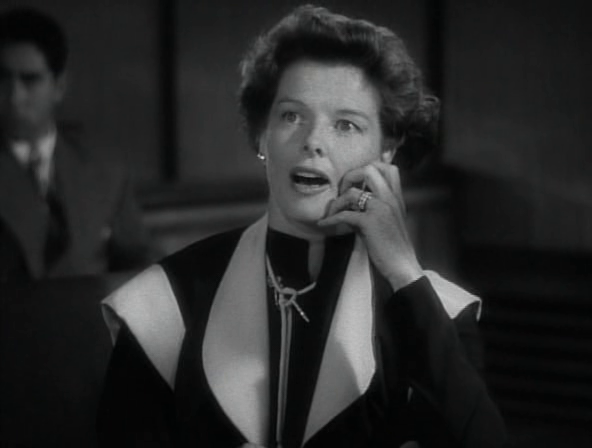
- Spencer Tracy as Adam Bonner
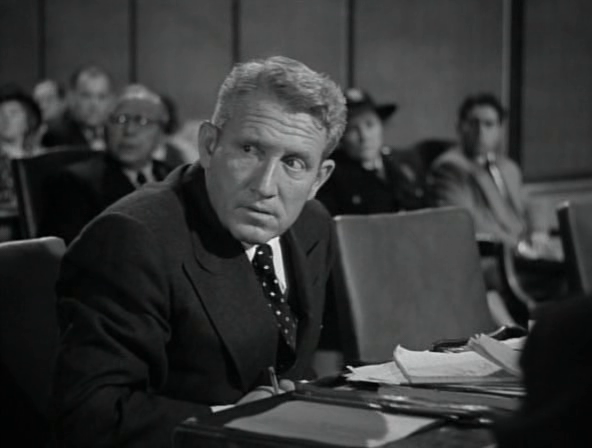
- Judy Holliday as Doris Attinger
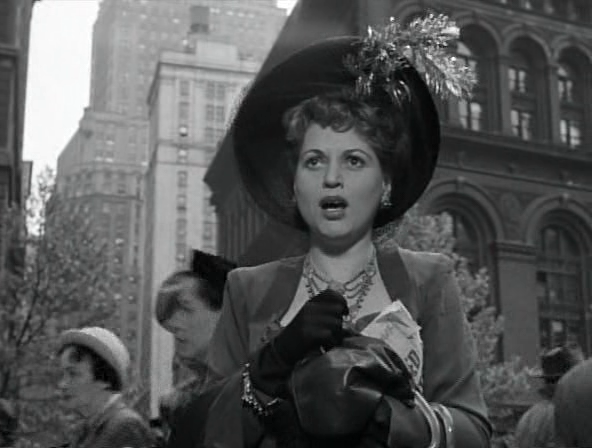
- A refreshingly candid look at a happy marriage under tension
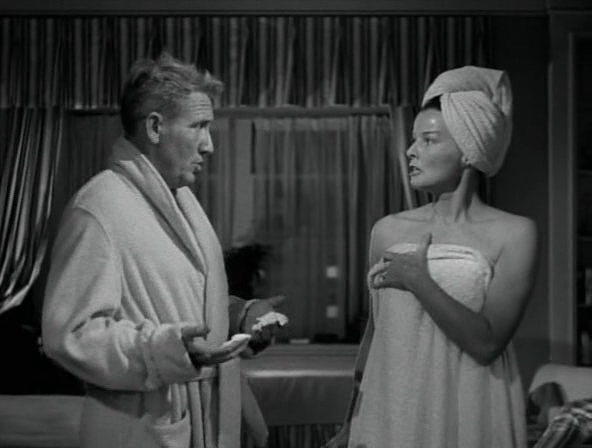
Must See?
Yes, as one of Tracy and Hepburn’s best outings together.
Categories
(Listed in 1001 Movies You Must See Before You Die)
Links:
|
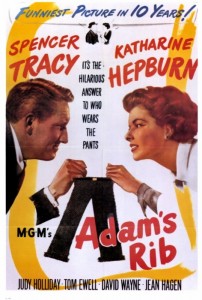




One thought on “Adam’s Rib (1949)”
A once-must, for its place in (feminist) cinema history, and for Holliday’s performance.
As I mentioned in my post on ‘Pat and Mike’ (my favorite of their pairings), the Tracy-Hepburn flicks are generally solid films, even if they don’t stand up marvelously well on repeat viewings.
‘Adam’s Rib’ is no exception, though it does have T&H in very relaxed and comfortable performances and they do seem to be having quite a bit of fun.
What’s particularly intriguing here is the bold feminist stance the film not only takes but places front and center – very refreshing for a film from the late ’40s, indeed! The female characters in this movie really do shine – and there’s a wide variety of well-written female roles.
~the most outstanding of which is Holliday; she has a relatively small role but she takes it and runs. Of course, she is aided in the eccentric, purposely choppy way her dialogue is written, but her character is nailed for us and fascinating to watch from the first moment we see her (which is what starts the film).
(Also of special note among the women is Hope Emerson as the court witness from showbiz. That must have been a fun role for Gordon-Kanin to write and it’s certainly a charming one as played by Emerson. Anyone who has seen her in ‘Caged’ may simply not believe it is the same actress.)
As noted, a real drawback to this film is Wayne as Kip. It would be interesting to know the specifics behind this role. Did Gordon and Kanin know Cole Porter personally and seek to put his persona on-screen? One would hope that is *not* the case: Kip is indeed an extremely annoying character but, more than that, an unnecessary intrusion on the plot. Worse, he’s given more screen time than is really bearable.
(A personal favorite shot in this movie comes when Hepburn asks the court to look at Tom Ewell – who is quite good as an oaf – and picture him as a woman. We see him as one, and it’s just a bizarrely *derlin’* image!)